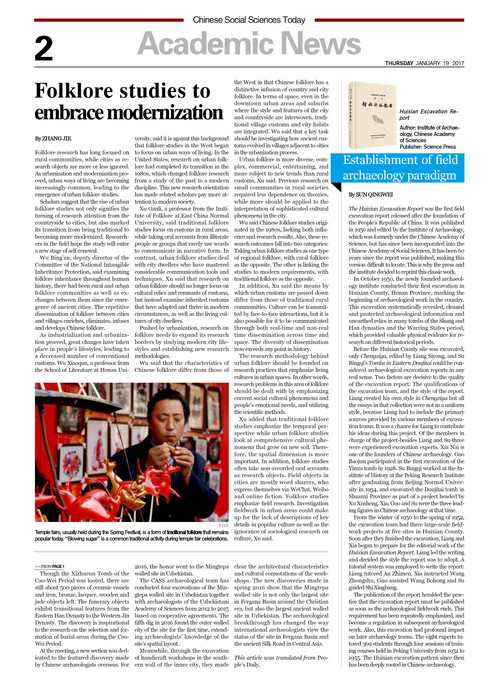Establishment of field archaeology paradigm
Huixian Excavation Report
By SUN QINGWEI
The Huixian Excavation Report was the first field excavation report released after the foundation of the People’s Republic of China. It was published in 1956 and edited by the Institute of Archaeology, which was formerly under the Chinese Academy of Science, but has since been incorporated into the Chinese Academy of Social Sciences. It has been 60 years since the report was published, making this version difficult to locate. This is why the press and the institute decided to reprint this classic work.
In October 1950, the newly founded archaeology institute conducted their first excavation in Huixian County, Henan Province, marking the beginning of archaeological work in the country. This excavation systematically revealed, cleaned and protected archaeological information and unearthed relics in many tombs of the Shang and Han dynasties and the Warring States period, which provided valuable physical evidence for research on different historical periods.
Before the Huixian County site was excavated, only Chengziya, edited by Liang Siyong, and Su Bingqi’s Tombs in Eastern Doujitai could be considered archaeological excavation reports in any real sense. Two factors are decisive to the quality of the excavation report: The qualifications of the excavation team, and the style of the report. Liang created his own style in Chengziya but all the essays in that collection were not in a uniform style, because Liang had to include the primary sources provided by various members of excavation teams. It was a chance for Liang to contribute his ideas during this project. Of the members in charge of the project-besides Liang and Su-three were experienced excavation experts. Xia Nai is one of the founders of Chinese archaeology. Guo Baojun participated in the first excavation of the Yinxu tomb in 1928. Su Bingqi worked at the Institute of History at the Peking Research Institute after graduating from Beijing Normal University in 1934, and excavated the Doujitai tomb in Shaanxi Province as part of a project headed by Xu Xusheng. Xia, Guo and Su were the three leading figures in Chinese archaeology at that time.
From the winter of 1950 to the spring of 1952, the excavation team had three large-scale fieldwork projects at five sites in Huixian County. Soon after they finished the excavation, Liang and Xia began to prepare for the editorial work of the Huixian Excavation Report. Liang led the writing and decided the style the report was to adopt. A tutorial system was employed to write the report: Liang tutored An Zhimen, Xia instructed Wang Zhongshu, Guo assisted Wang Bohong and Su guided Shi Xingbang.
The publication of the report heralded the practice that the excavation report must be published as soon as the archaeological fieldwork ends. This requirement has been repeatedly emphasized, and become a regulation in subsequent archaeological work. Also, this excavation had profound impact on later archaeology teams. The eight experts tutored 369 students through four sessions of training courses held in Peking University from 1952 to 1955. The Huixian excavation pattern since then has been deeply rooted in Chinese archaeology.



